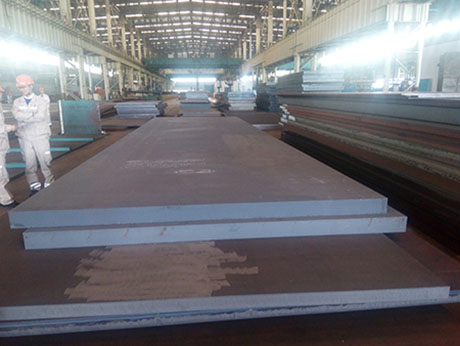

Z-direction steel, also known as "lamellar tearing resistant steel", is the Z-direction performance test steel. In the steel structure using welding connection, when the thickness of the steel plate is not less than 40mm and it is subjected to the tensile force in the thickness direction of the plate, in order to avoid lamellar tearing during welding, a steel that resists lamellar tearing (commonly referred to as "Z direction steel"). There is a lamellar tearing problem in thick plates, so the Z-direction performance test is required.

Steel plates and shaped steels are formed by rolling. Generally, the steel used in multi-tall steel structures is hot rolled. Hot rolling can destroy the casting structure of steel ingots and refine the grains of steel. The bubbles and cracks formed during the casting of the steel ingot can be welded under the action of high temperature and pressure, thereby improving the mechanical properties of the steel. However, this improvement is mainly reflected in the rolling direction, because non-metallic inclusions (mainly sulfides, oxides, silicates, etc.) inside the steel are pressed into thin slices after rolling, and remain in the steel plate ( Generally parallel to the surface of the steel plate), and the steel plate appears delamination (interlayer) phenomenon. This non-metallic sandwich phenomenon. Deteriorates the tensile properties of the steel in the thickness direction. Therefore, the mechanical properties of the steel plate are different in three directions: along the rolling direction; the performance perpendicular to the rolling direction is slightly worse; and the performance in the thickness direction is second. Lamellar tears are more likely to occur in thick steel plates, because the thicker the steel plate, the more non-metallic inclusion defects, and the thicker the weld, the greater the welding stress and deformation. To solve this problem, Z-direction steel is used. This steel plate is a steel that has been specially smelted and treated on the basis of a certain level of structural steel (called the parent steel). Its sulfur content is less than 1/5 of that of general steels, and its section shrinkage is more than 15%. . The stress performance (mainly ductility) of the steel plate in the thickness direction is called Z-direction performance. The Z-direction performance of the steel plate can be obtained by conducting a tensile test on a sample, and is generally measured by the reduction in area.
Just like you, 70% customers choose long-term cooperation with BBN steel not only for our good product and service quality, good reputation in the international market, but also for our experienced one-stop raw material supply and further steel processing!
